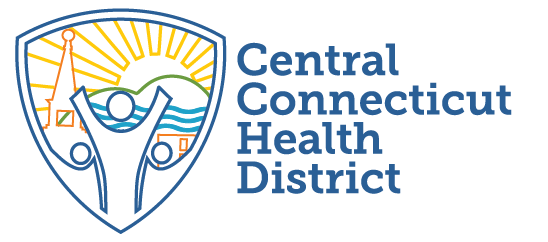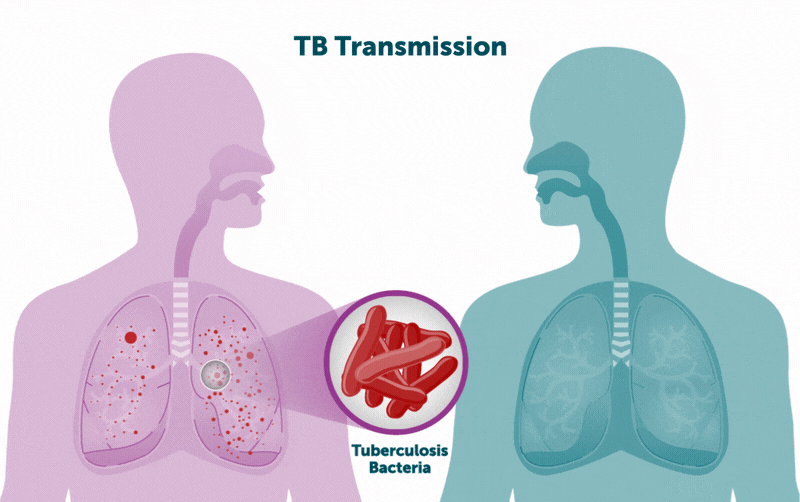Tuberculosis
Tuberculosis (TB) is caused by a bacterium (or germ) called Mycobacterium tuberculosis. In the United States, the majority of TB disease cases in people are caused by Mycobacterium tuberculosis. Other mycobacteria (such as Mycobacterium bovis) can also cause TB disease in people.
TB usually affects the lungs. TB can also affect other parts of the body, such as the brain, the kidneys, or the spine. TB can also affect multiple parts of the body at the same time. For example, TB can affect both the lungs and lymph nodes.
Not everyone infected with TB germs becomes sick. As a result, two TB-related conditions exist: inactive TB (or latent TB infection) and active TB disease.
If not treated properly, TB disease can be fatal.
Types
Inactive TB (Latent TB)
This is a medical illustration of drug-resistant, Mycobacterium tuberculosis bacteria.
TB germs can live in the body without making you sick. This is called inactive TB, or latent TB infection. People with inactive TB are infected with TB germs, but they do not have active TB disease. They do not feel sick, do not have any symptoms, and cannot spread TB to others. Without treatment, people with inactive TB can develop active TB disease at any time and become sick.
Keep Reading: About Inactive Tuberculosis (TB)
Active TB Disease
TB germs become active if the immune system can’t stop them from growing. When TB germs are active (multiplying in your body), this is called active TB disease. People with active TB disease feel sick. They may also be able to spread the germs to people they spend time with every day. Without treatment, active TB disease can be fatal.
Keep Reading: About Active TB Disease
Signs and symptoms
Symptoms of active TB disease include:
A cough that lasts three weeks or longer
Chest pain
Coughing up blood or sputum (phlegm from deep inside the lungs)
Weakness or fatigue
Weight loss
Loss of appetite
Chills
Fever
Night sweats
People with inactive TB do not have symptoms. However, without treatment, they can develop active TB disease and become sick.
Keep Reading: Signs and Symptoms of TB
Risk factors
Anyone can get TB, but you might have a higher risk for TB if you:
Were born in or frequently travel to countries where TB is common, including some countries in Asia, Africa, and Latin America
Live or used to live in large group settings where TB is more common, such as homeless shelters, prisons, or jails
Recently spent time with someone who has active TB disease
Have a weaker immune system because of certain medications or health conditions such as diabetes, cancer, and HIV
Work in places where TB is more likely to spread, such as hospitals, homeless shelters, correctional facilities, and nursing homes
Keep Reading: Tuberculosis Risk Factors
How it spreads
TB is spread through the air from one person to another. The TB germs are put into the air when a person with active TB disease of the lungs or throat coughs, speaks, or sings.
TB is spread through the air from one person to another.
These germs can stay in the air for several hours, depending on the environment. TB germs are more likely to spread in indoor areas or other places with poor air circulation (such as a closed vehicle) than in outdoor areas. People who breathe in the air become infected with TB.
People with active TB disease are most likely to spread TB germs to people they spend time with every day.
Keep Reading: How TB Spreads
Testing
CDC recommends that people that are at increased risk should be tested for TB. There are two types of tests that can find TB infection:
TB blood test
The TB blood test is also called an interferon-gamma release assay or IGRA. The TB blood test measures how your immune system reacts to the germs that cause TB.
If you have ever received a vaccine for TB, your health care provider should recommend the TB blood test. Unlike the TB skin test, TB blood tests are not affected by the TB vaccine (BCG vaccine).
TB skin test
For the TB skin test, a health care provider uses a small needle to put some testing material under the skin. You will need to return to your health care provider in two to three days to see if there is a reaction.
If your TB blood test or skin test result is positive
You have TB germs in your body. Your health care provider will do other tests to determine if you have inactive TB or active TB disease.
These tests may include a chest x-ray, and a test of the sputum (phlegm) you cough up.
Keep Reading: Testing for Tuberculosis
Treatment
If you have inactive TB, treating it is the best way to protect you from getting sick with active TB disease.
If you have active TB disease, you can be treated with medicine. You will need to take and finish all of your TB medicine as directed by your health care provider. This is to help you feel better and prevent other people from getting sick.
Keep Reading: Treating Tuberculosis
Vaccines
Bacille Calmette-Guérin (BCG) is a vaccine for TB disease. The vaccine is not generally used in the United States. It is given to infants and small children in countries where TB is common. It protects children from getting severe forms of active TB disease, such as TB meningitis.
Tell your health care provider if you have received the TB vaccine, especially if you are getting tested for TB infection because it can cause a false positive TB skin test reaction. TB blood tests are the preferred tests for people who have received the BCG TB vaccine.
How CCHD can help
Our Public Health Nurses here at CCHD monitor patients with Latent and Active TB. Our nurses make sure patients with TB in our district (Berlin, Rocky Hill,Newington, Wethersfield, CT) have access to healthcare, are getting proper medical treatment, serve as liaisons between the medical provider and the patient and ensures they are taking their medications as directed through Direct Observed Therapy (DOT).
DOT is extremely important. It helps to ensure that medications are being taken as directed. If TB medications are not taken as directed, this runs the risk of multiple drug resistant TB (MDR). MDR is both dangerous and extremely costly.
For more information on TB please visit the Connecticut Department of Public Health’s TB Control Program website: TB Control Program
To contact our Public Health Nurses:
Email : Aemanuel@ccthd.org or call/text 860-990-5580
Resources
Centers for Disease Control (CDC) Tuberculosis website: www.cdc.gov/tb
Connecticut Department of Public Health Tuberculosis Control Program website: https://portal.ct.gov/dph/tuberculosis/tuberculosis-control-program
Risk Assessment for Tuberculosis:
Use this tool to identify asymptomatic adults and children for latent TB infection (LTBI) testing.
This tool can be used for school-aged children to determine if a student should have a TB test.
This risk assessment does not supersede any TB testing mandated by statute, regulation or policy.
Do not repeat testing unless there are new risk factors since the last test. If initial negative screening test occurred prior to 6 months of age, repeat testing should occur at age 6 months or older.
https://portal.ct.gov/-/media/dph/tuberculosis/tb-risk-assessment-and-user-guide.pdf
Tuberculosis educational handout: click HERE to download and print.









